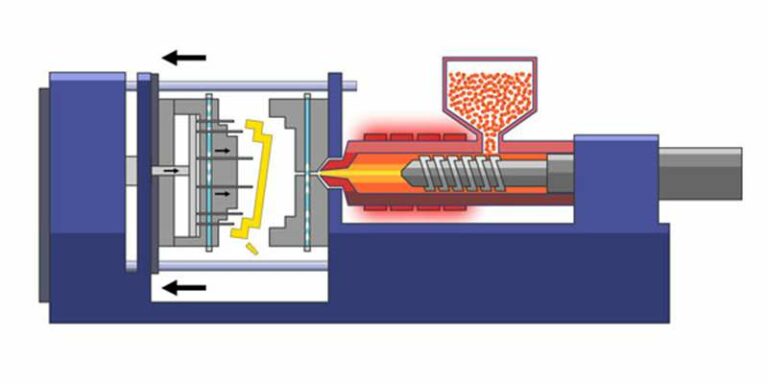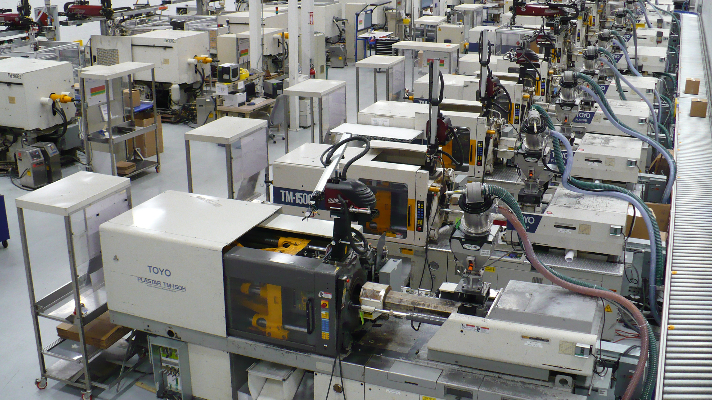The Duty of Plastic Injection Molding in Creating Cost-Effective Industrial Parts
The Duty of Plastic Injection Molding in Creating Cost-Effective Industrial Parts
Blog Article
Understanding the Fundamentals of Plastic Shot Molding Procedures
Plastic shot molding offers as a foundation of contemporary manufacturing, giving a systematic technique to creating complicated components with accuracy. Checking out these vital aspects could disclose exactly how even minor adjustments can lead to substantial enhancements in production outcomes, raising concerns concerning the possibility for development in this well established process.
What Is Plastic Injection Molding?
Plastic injection molding is an extensively used production process that changes thermoplastic and thermosetting materials right into precise and intricate shapes. This method is preferred for its ability to create high quantities of similar components with extraordinary precision, making it a vital method in different sectors, including vehicle, customer goods, and medical tools.
The process includes thawing the picked plastic material and injecting it right into a mold and mildew under high pressure. The mold, developed to the requirements of the desired part, enables the molten plastic to take form as it cools down and strengthens. Once the material has set, the mold and mildew is opened, and the completed component is ejected.
Plastic injection molding supplies a number of advantages, consisting of reduced waste, consistency in production, and the ability to include detailed designs that may be testing with various other manufacturing methods. Furthermore, it supports a broad variety of materials, each supplying special residential properties that can be customized for details applications. As sectors remain to introduce, plastic shot molding stays at the leading edge, allowing the advancement of sophisticated products that meet evolving consumer needs.
The Shot Molding Process
The injection molding procedure is an advanced method that involves several key phases to generate high-grade plastic parts. Originally, plastic pellets are fed right into a heated barrel where they are melted right into a thick liquid. This molten plastic is after that injected under high stress into a precision-engineered mold, which shapes the product into the wanted kind.
When the mold is loaded, the plastic is enabled to strengthen and cool, taking the form of the mold cavity. Air conditioning time is vital, as it impacts the cycle time and the final properties of the shaped part. After enough air conditioning, the mold opens up, and the finished part is ejected making use of ejector pins.

Materials Made Use Of in Shot Molding
Numerous products can be made use of in the shot molding procedure, each offering special residential or commercial properties that satisfy particular applications. The most typically utilized materials include thermoplastics, thermosetting plastics, and elastomers.

Thermosetting plastics, like epoxy and phenolic materials, undertake a chemical change during the healing process, resulting in a stiff, stringent framework. These materials are suitable for applications calling for high heat resistance and architectural honesty, typically used in automotive parts and electric insulators.
Elastomers, consisting of silicone and rubber-based products, provide versatility and durability. Their one-of-a-kind residential or commercial properties make them suitable for applications that demand elasticity, such as seals and gaskets.
Furthermore, specialty products like bio-based plastics and composites are getting grip for their environmental benefits and enhanced performance attributes, expanding the extent of shot molding applications in numerous sectors. Understanding the homes of these products is vital for picking the proper kind for certain jobs.
Benefits of Injection Molding
Injection molding stands apart as a highly effective production procedure that uses many advantages for producing complex get rid of accuracy. Among the most significant advantages is the capacity to produce elaborate Look At This designs that would be tough or impossible to attain with various other methods (Plastic Injection Molding). The process enables tight tolerances and thorough functions, ensuring high-quality parts
Furthermore, injection molding is understood for its rapid manufacturing capabilities, making it a suitable selection for high-volume manufacturing. Once the mold is created, components can be created swiftly, reducing lead times and enhancing overall productivity. This performance not only decreases production costs however also gives a competitive side on the market.
The versatility of products made use of in injection molding better improves its allure. A broad array of thermoplastics and thermosetting polymers can be employed, enabling suppliers to choose products that best satisfy their details requirements, consisting of warm, adaptability, and toughness resistance.
Furthermore, the procedure decreases waste, as excess material can typically be reused and recycled. This sustainability aspect adds to a minimized ecological impact, making injection molding a liable manufacturing choice. On the whole, the advantages of injection molding make it a preferred technique for numerous sectors.
Aspects Influencing Product Quality
While various elements can affect product high quality in shot molding, recognizing these components is crucial for achieving optimum results. Key aspects include material selection, refining criteria, and mold and mildew layout.
Product option plays an essential duty, as various polymers display special properties that affect flowability, strength, and thermal security. Poor material choice can lead to defects such as warping or insufficient dental filling.
Processing parameters, including stress, temperature level, and cycle time, need to be thoroughly managed. Variations in these setups can lead to disparities partly measurements and surface area coating. Excessively high temperature levels may cause destruction of the polymer, while insufficient stress can result in short shots.
Mold style is equally important, as it establishes the flow of the molten plastic and the cooling procedure. Improperly designed mold and mildews may cause uneven air conditioning rates, causing dimensional inaccuracies and residual stress and anxieties.

Final Thought
Finally, plastic injection molding functions as an important manufacturing process that allows the efficient production of high-quality elements. Mastery of the shot molding process, consisting of the understanding of products and the influence of different variables on product top quality, is important for attaining ideal outcomes. weblink The benefits of this approach, such as cost-effectiveness and layout versatility, additional emphasize its relevance throughout numerous industries, solidifying its condition as a favored choice for high-volume manufacturing.
Plastic shot molding serves as a foundation of contemporary production, giving a systematic technique to generating intricate components with accuracy.Plastic injection molding uses numerous benefits, consisting of minimized waste, consistency in manufacturing, and the ability to integrate elaborate layouts that may be testing with various other making techniques (Plastic Injection Molding). As markets continue to innovate, plastic shot molding continues to be at the leading edge, allowing the growth of advanced products that satisfy progressing customer needs
The injection molding procedure is an advanced method that involves numerous key phases to create high-quality plastic parts.In conclusion, plastic shot molding offers as a critical production procedure that makes it possible for the efficient production of high-quality elements.
Report this page